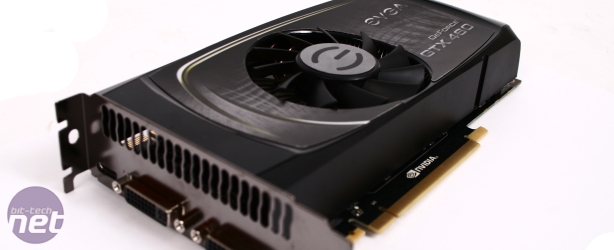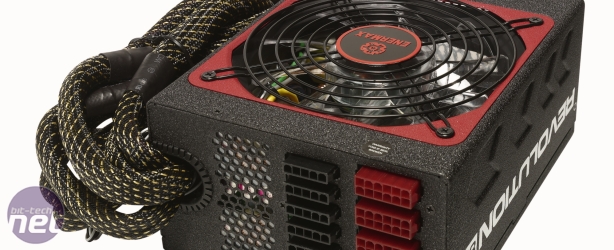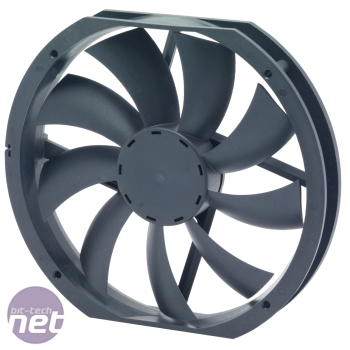PC Hardware Buyer's Guide August 2010
August 9, 2010 | 09:26

Folding Rig August 2010
If you're seriously considering building an entire PC just for folding, then you're clearly not going to settle for doing it in a half-baked way. While the recommendations for the awesome folding farm can be applied when choosing hardware for an everyday PC, this system is for maximum ppd per pound per watt.After discovering what graphics card is best for folding, our folding rig offers the best balance between ppd, cost and energy consumption. If you don't know what folding is all about, it's a distributed computing application that aims to model how proteins fold, thus delivering useful simulation data for scientists to use in the fight against several diseases such as Alzheimer's and Parkinson's disease. The project is run by Stanford University and has made significant progress, as you can read from Folding@home's peer-reviewed research papers.
The genius of f@h is that it's competitive, with a leaderboard and teams. To help us in our quest to be the most productive folders on the planet, join our team by using the team ID of 35947. Cheers!
| Folding Rig | |||
| Product | UK Price (inc VAT) | US Price (ex tax) | |
| Graphics Card(s) | 4 x 768MB Nvidia GeForce GTX 460 | 4 x £150 | 4 x 200 |
| Cooling | Antec Big Boy 200mm fan | £20 | $20 |
| Motherboard | MSI 890FXA-GD70 | £165 | $200 |
| CPU | 2.8GHz AMD Athlon II X2 240 | £45 | $50 |
| Memory | 2GB 1,333MHz DDR3 | £45 | $50 |
| PSU | Enermax Revolution 85+ ERV1050EWT | £210 | $285 |
| Case | None | £0 | $0 |
| CPU Cooler (UK) | Akasa AK-876 | £15 | NA |
| CPU Cooler (US) | Arctic Cooling Freezer 64 Pro | (£15) | $30 |
| Storage (HDD) | 160GB SATA 3Gbps | £30 | $40 |
| Overall Price: | £1,130 | $1,475 | |
New This Month
As our folding rig took a holiday as we researched which graphics card is best for folding, technically everything is new this month. However, those with Ent-like memories will have noticed that some of the components are from folding rigs of yore and will be surprised by the new entries.The headline novelty is the quartet of 768MB GeForce GTX 460 graphics cards. These are one of the most power-efficient folders at the moment, delivering 56 points per pound and 46 points per watt. Four GTX 460s should generate around 34,500ppd. These figures put even folding stalwarts such as the GeForce 9600 GSO. However, these cards also mean that you need a motherboard with space for four dual-slot graphics cards and a PSU that's got eight 6-pin PCI-E power connectors.

The board we've chosen is the MSI 890FXA-GD70, essentially because it works and it has four dual-slot graphics slots. We've gone with a Socket AM3 board because AMD's cheapest current-generation CPU (the Athlon II X2 240) is much cheaper than Intel's cheapest current-generation CPU (the Pentium G6950). If you wanted to run a few of those massive CPU folding cores, you could opt for an LGA1366 board and Core i7 CPU.
The PSU we've chosen is Enermax's Revolution 85+ ERV1050EWT, a 1.05kW power supply that has the requisite eight 6-pin PCI-E power conenctors. This PSU was recently reviewed in our sister mag Custom PC, who liked the post-shutdown cooling and the high 89 per cent efficiency, concluding that 'the ERV1050EWT is a great buy, despite the high price.'

And The Rest
The Athlon II X2 240 processor is sufficient to drive data to all four cards - the CPU doesn't need to do that much in reality, and if you're looking for something slightly lower wattage (remember it won't be at full load, so not reaching the TDP) then you can pay more for a energy efficient Athlon II X2 240e, or simply experiment with undervolting any Socket AM3 CPU.We've used 2GB of the cheapest branded memory we could find, as there's no gain from fast and expensive memory when folding. In fact, a single stick of 2GB DIMM of 1,333MHz DDR3 is fine (we'd have opted for 1,066MHz, but couldn't find any in stock). To cut power consumption, you might consider using low voltage memory, such as a Kingston LoVo kit or some 1.35V OCZ Low Voltage memory but weigh the extra cost of the kit against the power savings before ordering, and also check that your motherboard allows you to apply low memory voltages.
 We've forgone the case too, because we're not confident how any on the market would cope with this many graphics cards long term. In place of a case, we've opted for just a simple solution: one huge fan.
We've forgone the case too, because we're not confident how any on the market would cope with this many graphics cards long term. In place of a case, we've opted for just a simple solution: one huge fan.Sit the 200mm Antec Big Boy on top of the graphics cards and it should stop them roasting to an early death.
We've used this setup in our own labs with seven GeForce 9600 GTs in a single Asus X58 WS motherboard and it's worked perfectly and continuously for almost a year now. If you do have a case to recommend us, please let us know.
A cheap 160GB hard drive from a reputable manufacturer will suffice, since not much storage is needed - simply the OS and the small Folding programs are needed. Using an SSD won't cut much from your power bill, so don't bother with one.
Finally, drop on the same Akasa AK-876 or Arctic Cooling Freezer 64 Pro that we also used in the Affordable All Rounder PC for ample cooling. If you want to save a few quid, the reference AMD cooler will suffice.

MSI MPG Velox 100R Chassis Review
October 14 2021 | 15:04








Want to comment? Please log in.